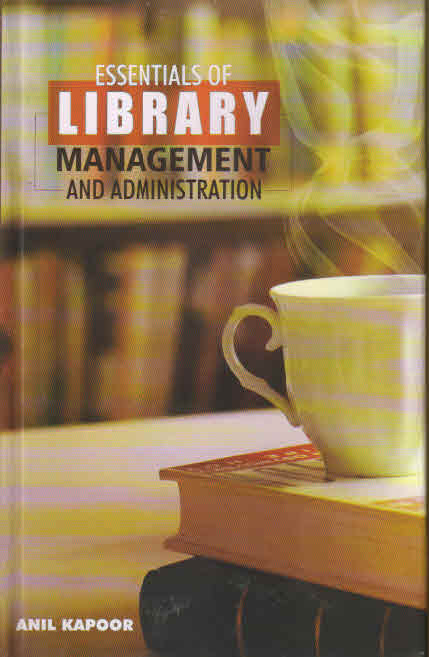Organizations, being a "part" of the greater social system, either operationally or conceptually cannot exist in isolation. The social break throughs are to be allowed for and it needs regular flow of reactions so that the paradigm of its services suit its ever. changing genesis . This is essential for its survival. Continual monitoring of extemal and internal environment enables the organization to leam about the changes in the client's needs, communication mechanisms, media and unstable resources and to develop new programs required for target groups. The message is distinct and irreversible as "the movement for improvement can never be suspended and the exercise for excellence can never be abandoned at any point of time" in any organization's life. The present book comprises essays based on several on-site investigations conducted by the author in the field of Library Management between 1985 and 1994. The issues were dealt with theoretical perspective. Additionally, the book attempts to identify thecorrelation between operational practices and conceptual ideas. The areas explored cover- LIS education, users, motivation factors, stress-coping in work spot, personnel problems, staff structure, forecasting, cost analysis itc. Capitalizing the feed back information,
Management of Libraries: Concepts & Practices
Rs. 600
Additional information
| ISBN | 817000201X |
|---|---|
| Year of Publication | 1996 |
| Binding | HardBound |
| Pages | |
| Edition | |
| Language | English |
Foreword
Introducation
Section One: LIS Education
Part I: Students Input
Conceptual foundation
Objective of LIS education
Stages in LIS profession
Students
At thereshold
Post studentship
Observation
A proposa
Conclusion
Report of a case study
Part II: Learning 'Serials
Conceptual Foundation
Learning material
Serial as learning material
Serials: Importance & Peculiarities
Serials: Scope of Learning
Conclusion
Reference (Section One)
Section Two: User
Part I: User Study
Conceptual Foundation
User as Customer
Obligation of the Management
User study
User Study: Preliminaries
User and influencing factors
User behaviour model
Category of users
Basic steps
Methodology & Principles
Literature use: Findings
User in University Library: a case study
User in School Library and the reality: a case study
Part II : Service to Rural Users
Conceptual Foundation
Target groups: Characteristics
Target groups: Their approach
Organization
Objectives
Nature of Service
An ideal System
Services from small -organisation
References (Section Two)
Section Three: Human Resource Management
Conceptual Foundation
Part I : Motivation
Introducation
Motivation Theories
Causes of low motivation
Indian Scenario (1975-85)
Suggestion
Herzberg's theory: an empirical study
Part II : Problem in Serial -Unit
Introducation
Arrangement
Serial administration: a System
Nature of work
Quality of the personnel
Discrimination
Characteristics of middle management
Report of a case study
Report of another study
Part III : A Staffing Pattern
Introduction
A proposed formula
Report of a case study
References (Section Three)
Section Four: HRM (Stress & coping)
Conceptual Foundation
Part I : Decision points in SCS
SCS: Input, Process, Output
Decision Points
Characteristics
Strategy
Use of information
Observation
Part II : Payment Factors in SCS
References (Section four)
Section Five: Forecasting
Conceptual Foundation
Report of a Case study
References (Section Five)
Section Six: Cost Effectiveness Analysis
Conceptual Foundation
Report of a Case study
References (Section Six)
Selected Bibliography
Index



